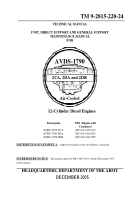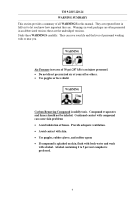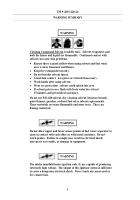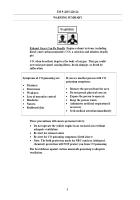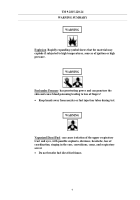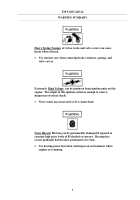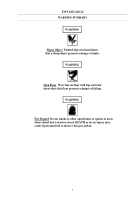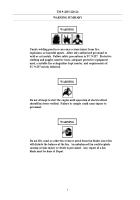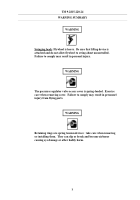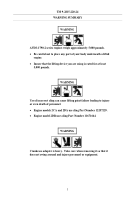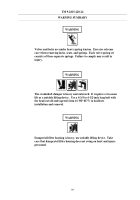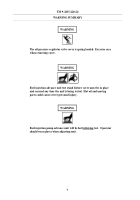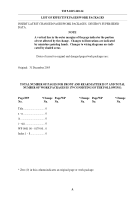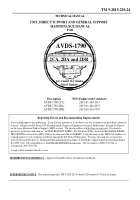TM-9-2815-220-24 - Page 5 of 1563
TM 9-2815-220-24
WARNING SUMMARY
WARNING
Electric Shock
Shock
happens when the body becomes part of an energized electrical path
and energy is transferred between parts of the body, or through the body to a
ground or the earth.
In order for shock to occur, a potential difference or
stored electrical charge must be present to cause the current to flow.
Current
flowing through the highly sensitive central nervous system can, under
certain conditions, cause serious injury or death.
Some of the conditions,
which govern the severity of a shock, are mentioned below.
Type of current
The type of current involved, alternating current (AC) or direct current (DC) is important.
Low
voltage, up to 40 volts of direct current (DC) circuits do not normally present a hazard to human
life.
Under some circumstances, however severe burns can result.
Even at low voltage,
alternating current (AC) circuits can be dangerous and present a lethal threat.
At commercial
frequencies (50-60 cycles or hertz) and intermediate voltages (50 to 600 volts), lethal current may
be conducted through the body.
Resistance
The resistance of the body and the degree to which the skin is insulated from the ground govern
the amount of current flowing through the body.
The skin offers the principle resistance which the
human body presents to the flow of current.
If the skin is wet or moist, the resistance is lowered
and therefore the greater flow of current and the severity of shock.
Time
The length of time the body is in the circuit is also important, particularly with respect to the
severity of burns.
Burns break down the skin, thereby lowering the resistance.
The more
extensive the burn, the less resistance provided.
Time becomes critical when current flowing
though the body causes loss of muscular control, contraction of the chest (which affects
breathing), and ventricular fibrillation of the heart.
When the last occurs, the heart's pumping
rhythm becomes irregular and it ceases to function properly.
Both the magnitude and path of the current flowing through the body are of primary importance.
When the path of the current is hand-to-hand or hand-to-foot, vital organs (brain, heart, lungs,
spinal cord) are affected, possibly with serious consequences.
Emergency Measures for Shock
Everyone engaged in any electrical or electronic work should be capable of carrying out the
following measures:
•
Free the person involved from the live circuit. If a person is "frozen" to a live electrical
contact, shut off the current if possible.
If this cannot be done, use wood boards, poles, or
sticks, a belt, piece of dry rope, an article of clothing, or any non-conducting material of
sufficient length to pull the body away from the contact.
Act quickly, and remember to protect
yourself during this operation.
•
Cut off the power.
Because of the dangers involved in being caught in a live circuit, know
how to cut off the power anywhere in your work area, and how to summon help in case of an
emergency.
Administer cardiopulmonary resuscitation.
c
Back to Top

